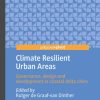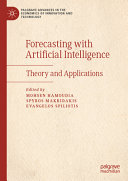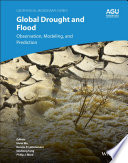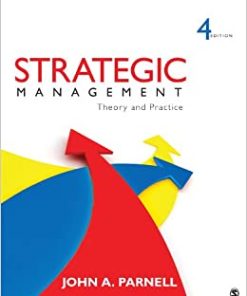Drought Early Warning and Forecasting Theory and Practice 1st Edition by Chris Funk, Shraddhanand Shukla 0128140127 9780128140123
$50.00 Original price was: $50.00.$25.00Current price is: $25.00.
Drought Early Warning and Forecasting: Theory and Practice 1st Edition by Chris Funk, Shraddhanand Shukla – Ebook PDF Instant Download/DeliveryISBN: 0128140127, 9780128140123
Full download Drought Early Warning and Forecasting: Theory and Practice 1st Edition after payment.

Product details:
ISBN-10 : 0128140127
ISBN-13 : 9780128140123
Author : Chris Funk, Shraddhanand Shukla
Drought risk management involves three pillars: drought early warning, drought vulnerability and risk assessment, and drought preparedness, mitigation, and response. This book collects in one place a description of all the key components of the first pillar, and describes strategies for fitting these pieces together. The best modern drought early warning systems incorporate and integrate a broad array of environmental information sources: weather station observations, satellite imagery, land surface and crop model simulations, and weather and climate model forecasts, and analyze this information in context-relevant ways that take into account exposure and vulnerability. Drought Early Warning and Forecasting: Theory and Practice assembles a comprehensive overview of these components, providing examples drawn from the Famine Early Warning Systems Network and the United States Drought Monitor. This book simultaneously addresses the physical, social, and information management aspects of drought early warning, and informs readers about the tools, techniques, and conceptual models required to effectively identify, predict, and communicate potential drought-related disasters.
Drought Early Warning and Forecasting: Theory and Practice 1st Table of contents:
1 Droughts, governance, disasters, and response systems
1.1 20th-century droughts—disasters and the El Niño–Southern Oscillation
1.2 21st-century droughts—developing effective early warning systems
References
2 Drought early warning—definitions, challenges, and opportunities
2.1 Definitions—supply and demand, the many flavors of “dry”
2.2 Droughts—when water demand exceeds water supply
2.3 Slow-onset disasters
2.4 Quantifying drought magnitude in multiple dimensions
2.5 Impact-based sectoral or disciplinary definitions of drought
2.6 Contrasting recent U.S. and southern African droughts
2.7 Chapter review
References
3 Drought early warning systems
3.1 The U.S. National Integrated Drought Information System
3.2 The Famine Early Warning Systems Network
3.3 Famine Early Warning Systems Network Food Security Outlooks
3.4 Multistage early warning—an Ethiopia example
References
Further reading
4 Tools of the trade 1—weather and climate forecasts
4.1 Examples of operational drought forecasting systems
4.1.1 U.S. Climate Prediction Center’s monthly and seasonal drought outlook
4.1.2 Famine Early Warning Systems Network food insecurity outlook
4.1.3 Miscellaneous application of weather and climate forecasts for drought forecasting
4.2 Methods of weather and climate forecasts
4.2.1 Climatological forecasts
4.2.2 Persistence-based forecasts
4.2.3 Analog forecasts
4.2.4 Statistical forecasts
4.2.5 Dynamical forecasting
4.3 Sources of weather and climate forecast skill
4.4 Summary
References
Further reading
5 Tools of the trade 2—land surface models
5.1 Introduction
5.2 An overview of land surface models
5.3 Operational land surface models–based drought monitors
5.3.1 National Center for Environmental Prediction’s North American Land Data Assimilation System
5.3.2 Africa Flood and Drought monitor
5.3.3 Global soil moisture monitoring
5.3.4 The Famine Early Warning Systems Network land data assimilation system
5.4 Limitations of drought monitoring using land surface models
5.5 Summary
References
6 Tools of the trade 3—mapping exposure and vulnerability
6.1 Exposure and vulnerability
6.1.1 Exposure—an example for East Africa
6.1.2 Vulnerability
6.1.3 An Ethiopia case study
6.2 Conclusion
References
7 Theory—understanding atmospheric demand in a warming world
7.1 Background
7.2 Reference evapotranspiration resistance terms
7.3 Defining reference crop evapotranspiration
7.4 The FAO 56 Penman–Monteith formulation
7.5 Temperature alone is insufficient to estimate reference evapotranspiration
7.6 Reference evapotranspiration decompositions and Morton’s complementary hypothesis
7.7 Spatiotemporal variations in reference evapotranspiration and actual evapotranspiration, and the
References
8 Theory—indices for measuring drought severity
8.1 Introduction
8.1.1 Consider multiple expressions of each individual data source
8.2 Length of record and nonstationary systematic errors
8.2.1 Frequently used satellite and “combination” drought indicators and indices
8.3 Per capita water availability
8.4 Summary and discussion
References
9 Sources of drought early warning skill, staged prediction systems, and an example for Somalia
9.1 The ocean as a source of skill
9.2 Skill from persistent atmospheric conditions
9.3 Predictive skill from the land surface
9.4 Staged opportunities for prediction support defense-in-depth
9.4.1 Stage 1: long-lead climate forecast
9.4.2 Stage 2: short-lead climate forecasts
9.4.3 Stage 3: mid-season climate/weather forecasts
9.4.4 Stage 4: late-season impact assessments
9.5 Summary: staged strategies for effective early warning
9.6 Conclusion
References
10 Practice—evaluating forecast skill
10.1 Introduction
10.2 Deterministic forecast skill scores
10.2.1 Pearson’s correlation
10.2.1.1 Higher skill at lower lead
10.2.1.2 Lower skill in forecasting terrestrial precipitation
10.2.2 Spearman’s rank correlation
10.2.3 Equitable threat score (Gilbert skill score)
10.3 Probabilistic forecast skill scores
10.3.1 Brier skill score
10.3.2 Ranked probability skill score
10.3.3 Reliability diagram
10.4 Summary
References
11 Practice—integrating observations and climate forecasts
11.1 Approach
11.2 Bias-correction and downscaling methods
11.2.1 Bias-correction and spatial downscaling method
11.2.1.1 Bias-correction
11.2.1.2 Spatial downscaling
11.2.2 Constructed analog method
11.2.3 Multivariate Adaptive Constructed Analogs
11.2.4 Bayesian merging
11.3 An example: The NASA Hydrological and Forecast Analysis System
11.4 Summary
References
12 Practice—actionable information and decision-making networks
12.1 Actionable information and the three pillars
12.2 Actionable information and decision-making networks—an example from famine early warning in E
12.3 Conclusion
References
13 Final thoughts
People also search for Drought Early Warning and Forecasting: Theory and Practice 1st:
has weather forecasting improved
drought monitor forecast
drought early warning systems
drought warning systems
drought warning time
Tags: Drought Early, Warning, Forecasting, Practice, Chris Funk, Shraddhanand Shukla
You may also like…
Computers - Computer Science
Bayesian Optimization: Theory and Practice Using Python 1st Edition
Computers - Artificial Intelligence (AI)
Forecasting with Artificial Intelligence: Theory and Applications
Physics - Mechanics
Classical and Analytical Mechanics: Theory, Applied Examples, and Practice 1st Edition Poznyak
Business & Economics - Accounting
Auditing Theory and Practice [Team-IRA] 1st Edition Mike Pratt
Computers - Networking
Earth Sciences - Geology
Global Drought and Flood : Monitoring, Prediction, and Adaptation 1st Edition Huan Wu
Management
Uncategorized
Medicine - Pharmacology
Theory and Practice of Physical Pharmacy 1st Edition by Gaurav Jain 8131232651 9788131232651







![Auditing Theory and Practice [Team-IRA] 1st Edition Mike Pratt](https://ebookmass.com/wp-content/uploads/2024/04/auditing-theory-and-practice-teamira-51680710-247x296.jpg)




